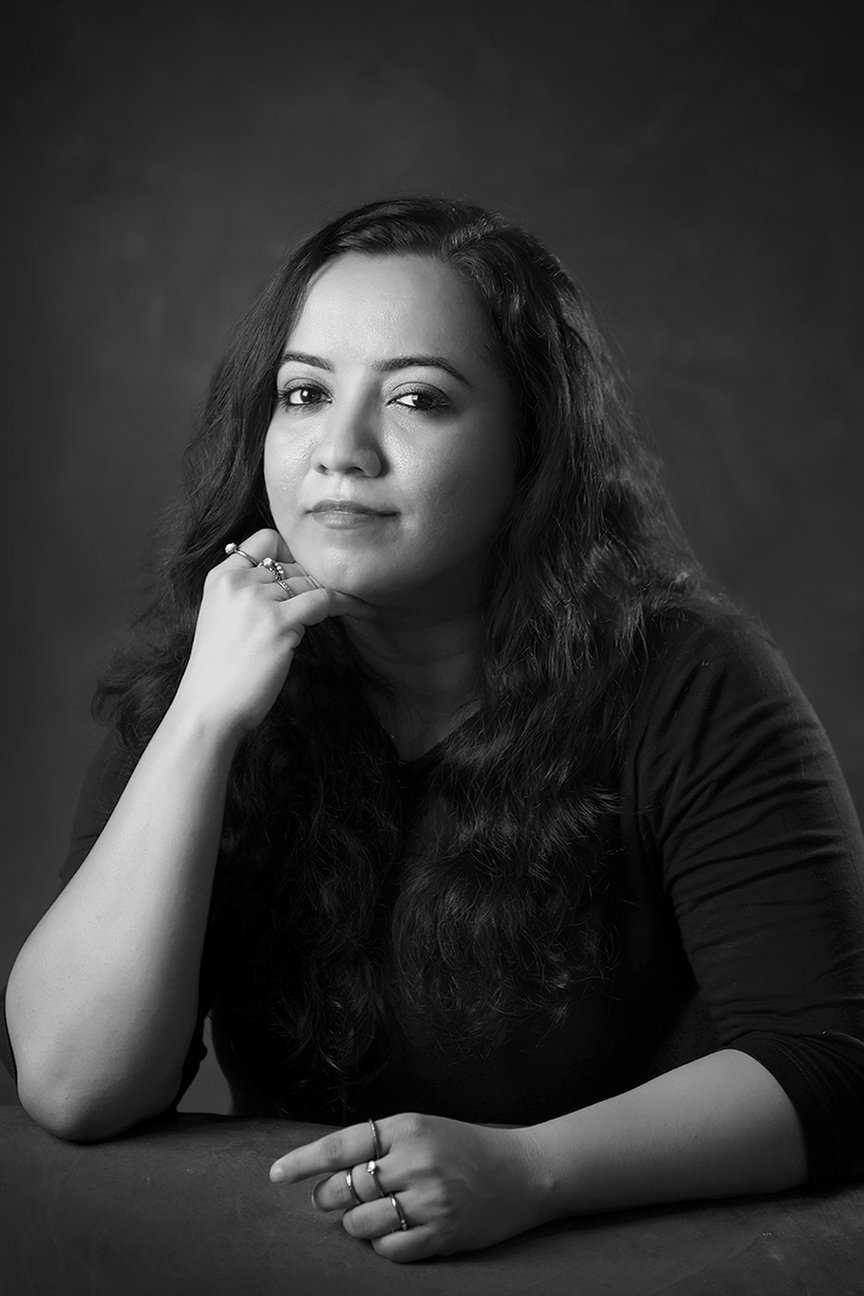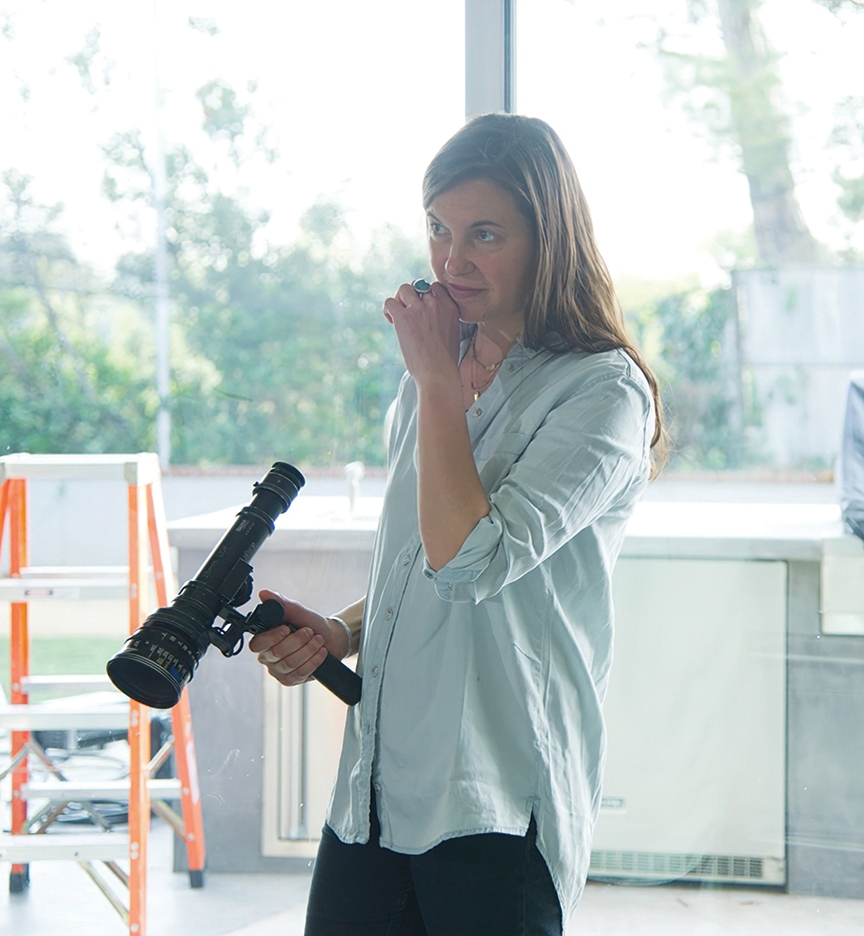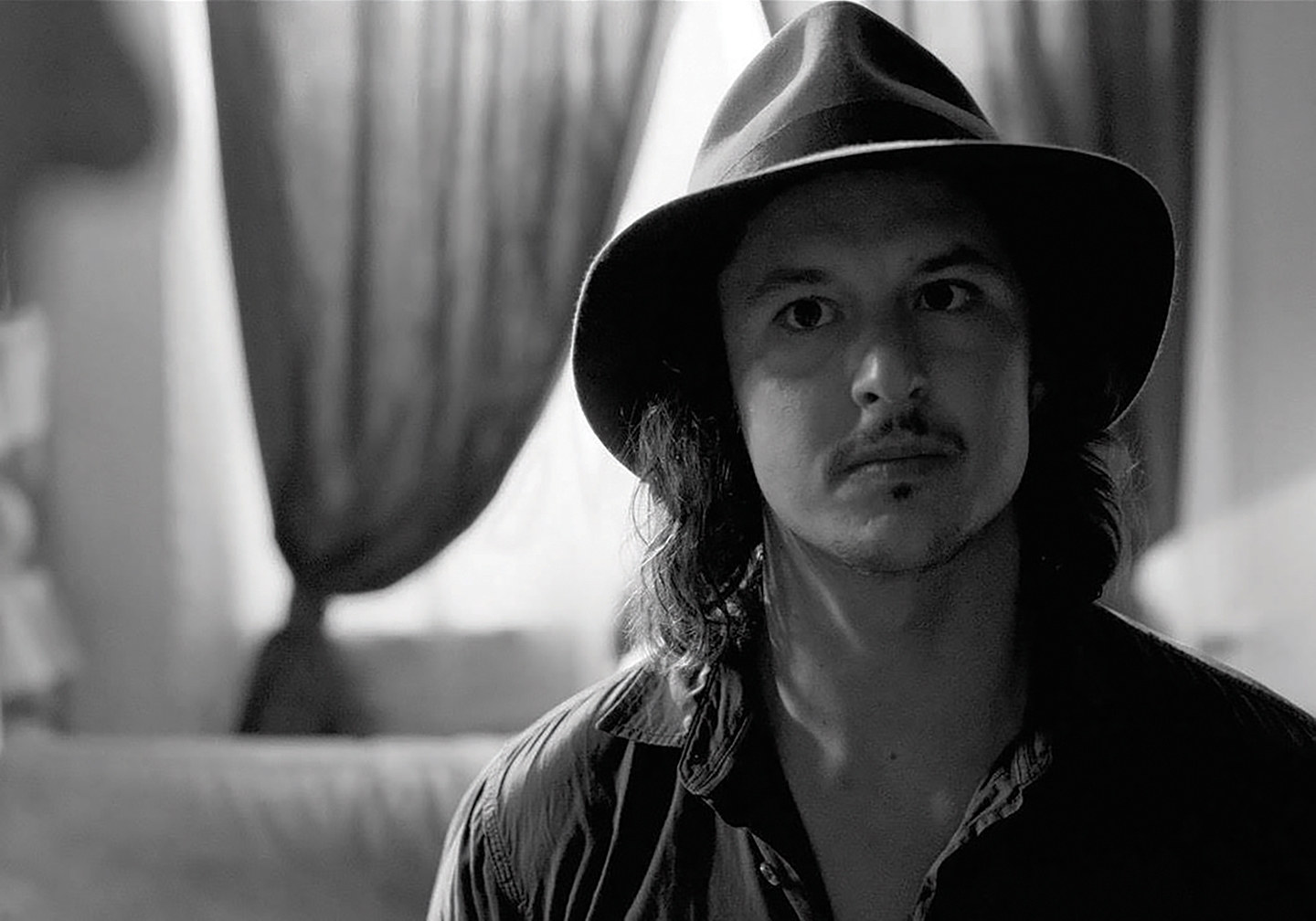
Nine That Shine: 2021 Rising Stars of Cinematography
A selection of talented artists whose camerawork caught our eye this past year.
American Cinematographer inaugurated our annual Rising Stars of Cinematography feature in 2017. Since then, we’ve watched proudly as various Rising Stars alums have continued their upward-trending career trajectories, producing acclaimed work that has confirmed the creative potential that led the magazine to spotlight their early achievements. Two from that first group of Stars have since become ASC members — Quyen Tran and Kira Kelly — with more surely to follow.
This year’s roster was selected by the magazine’s editorial staff with informed input from a trio of accomplished ASC members who know talent when they see it: Amelia Vincent, Eric Steelberg and “Risen Star” Kelly. Our collaborative deliberations have produced another diverse group hailing from a wide variety of backgrounds, but common touchstones are their passion for cinematography; their boundless enthusiasm for creative expression; and their admiration for the ASC, its members and their work.
Our new format presents each cinematographer’s key credits along with information about their training and education, awards and honors they’ve earned, artistic influences, lessons they’ve absorbed on their career path, thoughts on the craft and the collaborative nature of their chosen art form, and recent accomplishments, as well as details about current and future projects.
Without further ado, we present this year’s honorees: Archana Borhade; Bruce Francis Cole; Shabier Kirchner; Hillary Fyfe Spera; Ross Giardina, ACS; Todd Antonio Somodevilla, SOC; Daphne Wu; Cale Finot; and Tobia Sempi, AIC.
— Stephen Pizzello, Editor-in-Chief

Key credits: Ashes on a Road Trip (aka Karkhanisanchi Waari), Idak: The Goat, Phuntroo, “Closing the Crop Gap” (social campaign)
Awards/Honors: First female cinematographer to win the prestigious Maharashtra State Award, for the Marathi feature Idak: The Goat, one of the three features chosen by the Maharashtra government panel to represent the Marathi film industry at the Cannes Film Festival
Training and education: “My teachers at Mindscreen Institute — Rajiv Menon, ISC; M.N. Gnanasekaran; and Venkatesh Chakravarty — were instrumental in shaping my understanding of cinematography. The most important takeaway from their lectures was that cinematography should be used in the service of storytelling and not the other way around.”
Best advice she’s received: “From Santosh Sivan, ASC, ISC: ‘Never obsess over the equipment or the lack of it. Some of the best cinematographic work has been done with absolutely the bare minimum.’”
Recent accomplishments: “I produced, shot and co-wrote my latest film, Ashes on a Road Trip [aka Karkhanisanchi Waari], a quirky comedy about a dysfunctional joint Indian family taking an eventful road trip to fulfill the last wishes of its recently deceased patriarch. It was the only Indian film to be selected for a world premiere at the 33rd Tokyo International Film Festival. Thereafter it was selected for film festivals in Shanghai, London, Toronto, New York, Los Angeles, Stuttgart and others, and it continues to travel the festival circuit. Though I couldn’t travel with the film due to pandemic restrictions, I am grateful for all the heartwarming messages I received from the patrons of the film, who said that they identified with the characters and conflicts portrayed and felt like they were watching their own family onscreen.”
Current project: “I’m pitching a feature film and a web series that I co-wrote and intend to shoot. I am also in conversations to direct and shoot an indie science-fiction film.”
Important career initiative: “I’m part of the Indian Women Cinematographers’ Collective [IWCC]. We are a group of craftswomen/technicians from the film industry who have come together to provide a platform for showcasing our work and encourage budding talent. The team members share their experiences, discuss technical equipment, and try to resolve each other’s queries. It also serves as a safe, nurturing forum for addressing any individual concerns or troubles. I am constantly in awe of the incredible talent in this colletive and continue to learn from them every single day.”

Key credits: Queen Sugar (Seasons 5 and 6), Farewell Amor, Jinn, A True Crime, A Gringo Honeymoon
Awards/Honors: 2010 Kent Film Festival Cinematography Award for Earthwork, presented by ASC member Julio Macat; 2015 nomination for Best Cinematography in a Short Film (A Gringo Honeymoon), Madrid International Film Festival
Training and education: “As far back as I can remember, I was always placed in advanced art classes and programs for inner-city kids. Growing up where I’m from, I benefitted greatly from those afterschool programs, and teachers who felt that my gift was special enough to pull me out of my surroundings. My mom agreed to let me go study at the University of North Carolina School of the Arts’ School of Filmmaking, where my discipline became cinematography. I eventually went on to study at the American Film Institute.”
Key lesson: “One of the most influential lessons I learned early on, as an undergrad, was the art of the basic visual languages, taught by a Hungarian film Instructor named Janos J. Kovacsi. He had us start with the fundamentals of designing photo-romans. Learning how to tell a story with just 8-10 images taken with a stills camera was key to understanding the craft of cinematography.”
Recent accomplishments: “After showcasing the feature Farewell Amor at Sundance 2020 to great reviews, I landed a position as alternating DP on Queen Sugar Season 5, executive-produced by Ava DuVernay for the OWN Network. Covid interrupted the normal shooting season, but we recently completed Seasons 5 and 6.”
Current project: “I’m in prep for a pilot that’s still being kept under wraps.”
Artistic influences: “Over the years I’ve noticed that my natural instincts have always led me to a place of bold expression. I am very appreciative and aware that in filmmaking, the story comes first. As much as I may want to get really expressive with the tools I’ve been given, I know that it takes a certain ‘dialing back’ so that the story is always served best, instead of building off an instinctual ‘micro-wave epiphany’ moment. [But] as much as I love cinema where the storytellers and the technique become invisible, I would like to make films that really embrace the experimentation of the technique. I have to honor who I am and the unique qualities I bring to the table, and anchor my craftmanship in that truth.”

Key credits: Small Axe, Bull, Skate Kitchen, Only You (2018), Sollers Point
Awards/Honors: BAFTA Television Craft Award, BSC Award nomination, L.A. Film Critics Association Award, New York Film Critics Award (all for Small Axe); Independent Spirit Award nomination (Bull)
Training and education: “I’m largely self-taught. I didn’t receive any formal training or go to school for cinematography. I mainly learned from jumping in headfirst and just doing it.”
Key lesson: “On the set of Small Axe, the mantra for the whole shoot was, ‘Limitations are freedoms’ — in other words, understanding that limitations aren’t crippling, but [can be] creatively freeing. We were encouraged to work with our limitations, as opposed to push-ing back on them, and I think that was really profound. Some of my favorite scenes were born from that philosophy.”
Recent accomplishments: “My most recent project is just working on my piece of mind, self-value and whatnot.”
Current project: “In the interim after Small Axe, I’m developing a book for a project I will direct and shoot called Augustown.”
Artistic influences: “Antigua, my home island, is a place I consider to be a pretty big artistic well that I often find myself drawing from. I’m also pretty inspired by what my peers are doing or have done, which always inspires me to just keep pushing. There’s a lot of value in [working within] a generation and community of people trying to figure it all out at the same time as you. Seeing how some have progressed and discovered their creative voices has been hugely inspiring.”
A fruitful collaboration: “Small Axe is, in my eyes, a pretty monumental achievement as far as my achievements go. [Director] Steve McQueen has always been a North Star for me as an artist and filmmaker, so to be able to work with him was something that I never thought would happen. I’ll always be incredibly grateful for that opportunity. Also, the stories that we’re telling are stories of my ancestry, of West Indian culture, which means a lot to me. To be a part of bringing those stories to life on screen is just incredibly special.”

Key credits: Dexter (2021), The Flight Attendant, Run, The Craft: Legacy, Wildlike, After Tiller, Oxyana
Awards/Honors: After Tiller won a Best Documentary Emmy in 2015; Wildlike earned a Gerald Hirschfeld, ASC Award for Cinematography at the 2015 Ashland Independent Film Festival in Oregon.
Training and education: “For me, it all started with still photography. Other than a class in high school, I was never formally trained. I never went to grad school for cinematography. I learned by shooting everything I could get my hands on, saying ‘YES’ to whatever came my way and seeing where it took me. My training was by doing — embracing mistakes as opportunities to learn.”
Key lessons: “Always keep the other eye open — figuratively. Just stay aware, tethered to the ground, and engaged. I try to do everything with a wide-open heart, and for me it’s good advice to not get too stuck in ‘tunnel vision.’ We have to be experiencing the world and taking part in it to reflect and connect to it in our work. I love the challenge of finding beauty in the unlikely moments. They’re everywhere, so I keep an eye open for them.
“Also, as cinematographers, we’re only as good as our team — we are not doing this solo. It takes a team, with every part simultaneously functioning together. I work for my crew — they are my family. I want everyone to be empowered, and I try to foster an environment that allows them to do their best work.”
Artistic influences: “[ASC members] Harris Savides, Gordon Willis and Vilmos Zsigmond, and Robby Müller [NSC, BVK]. The films of the ’70s.”
Memorable moments: “I am extremely proud of my team on Dexter. This past winter, we did 60 straight days of exteriors in below-freezing weather. The camera department had to access most locations via sled! It was our Fitzcarraldo, and the crew [handled it] with incredible patience, professionalism and grace.”
Current project: “Right now I’m working on the new season of Dexter for Showtime with a few of my favorite frequent collaborators: director Marcos Siega, camera operator Tom Fitzgerald, and 1st ACs Andrew Juhl and Kali Riley.”

Key credits: Gold, Catch the Fair One, Carl’s Motel, The Dressmaker (2nd unit)
Awards/Honors: Camerimage Jury Award nomination for Best Cinematography in a Music Video (“Some Minds” by Flume) and Camerimage Golden Tadpole nomination in the Student Etudes competition (Legend); a dozen ACS Awards for numerous projects from 2009-’18 in various categories
Training and education: “I studied in Prague in 2003. After that I started shooting music videos and fashion films; learning for me has always been about doing. I shot a lot of film at the time, slowly building experience with the process and collaborating with directors. Being nominated at Camerimage for Best Cinematography in a Music Video seemed to open a lot of doors for me, as people then saw my body of work.”
Best advice he’s received: “There is no such thing as a big or small movie — just a good movie.”
Artistic inspirations: “I’m inspired and driven not just by film but by art, photography, and the parallels between life and art. Film language that pre-dates popular culture also inspires me greatly.”
Recent accomplishments: “I recently shot the upcoming feature Gold, directed by Anthony Hayes and starring Zac Efron. It’s a post-apocalyptic film that addresses greed, capitalism and the human condition, shot primarily in the desert with a lot of day exteriors. One challenge was installing tone and texture throughout while not deviating from supporting the story, while shooting some sequences over a few days and planning accordingly. Lensing, composition and camera movement were very important to create tension; embracing frontlight to enhance the main character’s journey was a leap for me. It was important to root the camera and hold on the character’s perspective, and to allow the pacing to be languid and real. This meant very long takes and minimal coverage, as opposed to gratuitous cuts to pain and anguish.
“Also, a film I shot in Buffalo, N.Y., Catch the Fair One, recently premiered at the Tribeca Film Festival and won an Audience Award. It’s directed by Josef Kubota Wladyka and produced by Mollye Asher, who also produced Nomadland, and Darren Aronofsky.”
Dream project: “I’m interested in both historical and present-day social issues that are incorporated into stories for films that can portray and elevate [those issues] with an execution that provides a heightened realism and a ride for the audience.”

Key credits: Happy! (Season 2); Yes, God, Yes; An American Pickle (additional photography); Can You Ever Forgive Me? (2nd unit); Embers
Awards/Honors: Best Feature Film, Newport Beach Film Festival, and Best Narrative Feature, New Orleans Film Festival (Embers); Best Film, The Creative Floor Awards (“Novartis” commercial); Platinum Award, AVA Digital Awards (“Nemours Children’s Health System” commercial)
Training and education: University of Southern California School of Cinematic Arts
Key lessons: “When it comes to lighting, keep it simple.” “Fill the frame with beauty.”
Artistic inspirations: “Stanley Kubrick for his compositions. Harris Savides [ASC] for his naturalistic lighting. David Lynch for his twisted view of reality and his beautiful mind. Noah Hawley and Dana Gonzales [ASC] for their vision of [the series] Legion and Fargo. Douglas Trumbull and Richard Yuricich for their ability to create altered realities from scratch.”
Recent accomplishments: “I shot a film called Yes, God, Yes, a coming-of-age story about a female Catholic school student who has a very funny and charming sexual awakening. The lead character, Alice, played by Natalia Dyer, doesn’t talk a lot in the film, so writer-director Karen Maine and I had to find a way to capture her expressions while also making her environment seem very present and al-most oppressive. Finding that balance while telling her story was the biggest challenge and most rewarding result. We created our own subtle look with the help of Panavision (Marni Zimmerman and Robert Presley, who provided custom detuned lenses), the post house in Atlanta (Moonshine Post, which provided a custom LUT), and our colorist at Light Iron, Sean Dunckley.
“I also shot some episodes of Happy! Season 2, and that was a crazy, amazing ride. I got to work with some of the most professional and creative people in the industry. I hit the ground running and loved every minute of re-creating the surreal hyper-world born of the graphic novel and the brilliant minds of show creator Brian Taylor and director Wayne Yip. The experimentation we got to do on a daily basis with lighting, camera and VFX — it was like filmmaking on speed. Nothing was too over-the-top.”
Current project: “I’m filming a project over this summer called Quest for Sleep, a docu-series about insomnia. We’re going to explore using natural light and bending reality so that we can get into the minds of people suffering from this disorder. I’m going to play a lot with composition and close-focus lenses, trying to capture what it’s like to feel trapped inside a hamster-wheel mind that never rests.”

Key credits: Accepted, Sound of Violence, Grasshoppers, 5th Ward (Season 1), The Disunited States of America
Awards/Honors: Accepted premiered at Tribeca 2021, Sound of Violence premiered at SXSW 2021
Training and education: “I went to USC School of Cinematic Arts and graduated in 2011. I love that program because they make you try everything. I tried everything and then I was like, ‘This is it. This is the most fun job on set.’ I have been obsessed with cinematography ever since.
Mentors: “This last year I was in the ASC Vision Mentorship Program. My mentor is Erik Messerschmidt. He’s super encouraging; he’s brought me on as a camera operator before. I’m able to text Erik whenever I have questions.”
First break: “I lucked out and was able to go to school part-time during my last year at USC, so I was just freelancing. It was 2011, everyone was starting to shoot on 5Ds, and you could do a lot with very little, with a young and scrappy crew. I booked a feature right out of college, the same year. It was very low-budget with a skeleton crew, but it was an amazing experience deep-diving into long-form narrative. I think because I had that one feature, it was easier to get others. That’s how I came up. I never really went through the lighting or camera track; I did the ‘no-budget feature as a DP’ track.”
Artistic influences: “My favorite filmmakers are Andrea Arnold and Wong Kar-wai. When I was growing up in Singapore and China, I also read a lot, and that’s always been a major inspiration. Storytelling is all the same — it’s about empathy and trying to understand each other. Filmmaking is a great language, similar to literature in that you’re trying to understand the director or the screenwriter the way you would a book author. It’s about fostering connection.”
Looking to the future: “When you’re in the American film industry, you have to think about the global pop-culture impact. My great-grandmother has watched Titanic — that’s how far the influence goes. So, what are we putting out? Are we helping or are we hurting? For me it’s important to work on stories that help. I’ve seen that [happening] the last couple of years with set dynamics and diverse crews and stories. If you’re a storyteller, you’re always saying something. For me, personally, if you’re telling a story, it should be something important and about emphasizing empathy.”

Key credits: Elizabeth Harvest, Leopard Skin, Jett, Project Power (2nd unit), Mile 22 (2nd unit)
Training and education: Georgia State University, BFA in Cinematography; Panavision two-year internship program
Key lesson: “I was working at Panavision Hollywood when Matthew Libatique, ASC came in to shoot some tests, and I asked him for any advice he would give an aspiring filmmaker. His response was, ‘Shoot. Shoot every chance you can. You’ll learn more from your successes and mistakes than anyone will ever be able to teach you.’
“I also credit ASC members Mauro Fiore and James Bagdonas for giving me the opportunities to assist for them, and also to watch how well they maneuvered through the politics of being a DP — which is something people don’t talk about nearly as much as they should, since it’s a big part of succeeding in this business.”
Artistic influences: “I’ve always been fascinated with movies, but it was Fred Elmes, ASC’s work on Eraserhead that made me want to be a DP. As with most of David Lynch’s films, the visual storytelling was so creative and mesmerizing that I knew I had to pursue cinematography as my passion and career.”
Recent accomplishments: “I’ve been fortunate enough to shoot for great directors on multiple projects. Over the years, Sebastian Gutierrez has not only been a collaborator, but a great friend. Finding filmmakers who you want to be around for 12 to 16 hours a day is vital in telling great stories. With Elizabeth Harvest, Sebastian and I looked to expand upon Vittorio Storaro, ASC, AIC’s color theory by assigning primary and secondary colors to the emotional through-line of each scene. Channeling [Pedro] Almodóvar and [Dario] Argento, we bathed scenes in very bold colors — which was both frightening, due to the permanent nature of using heavy lighting gels, and freeing, as we were fully committed to embracing the look.”
Current project: “I just spent three months in the Dominican Republic shooting the limited series Leopard Skin. It was a very interesting case study in isolated or ‘bubbled’ shooting, as the entire project was shot at an exclusive resort on the northern coast. It was an extremely small crew, so I was lucky enough to have some of the best technicians in our industry collaborating with me.”
Dream project: “A 1970s-era car-thief bio told in the style of Goodfellas. I might have to pen that one myself, though!”

Key credits: One Way, Aventura (short film); “Mercedes SUV,” “Genesis Stunt” and “HLN Promo” commercials
Awards/Honors: Various honors for commercials, including a D&AD Award; 2017 Best Daytime Cinematography Award for the short No Place to Fall; Fresh Future Carbon Awards for the commercials “Sea Goddess” and “Spaceship Byton”
Training and education: “I had my first go at filmmaking in Italy at the Scuola d’Arte Cinematografica in Genova, and then I enrolled in a Masters program at the London Film School, where I really discovered and fell in love with cinematography. Up to that moment I thought I would be a director. The London Film School was highly practical, and we got to work in every role during the term assignments. That gave me invaluable knowledge of how every department works on a film shoot, and how to communicate with all the heads of departments.”
First break: “I remember early on always being turned down by [commercial] clients and agencies because my reel didn’t have any cars in it, so I decided to take things into my own hands. Together with a director friend of mine, I bought a small model of a Jaguar XK, and with a little camera we filmed a spec commercial for Jaguar. We used tiny fluorescent tubes to create moving-light effects on the model car. We didn’t tell anybody that it was a model car, and nobody guessed it. That little film was very well received and led me to sign with my first agent in the U.K. and then my first agent in the U.S. To this day I still see that film from time to time as a reference in agencies and client briefs.”
Recent accomplishments: “During the pandemic year, I shot the feature film One Way with director Andrew Baird, and the short Aventura with director Chloë de Carvalho, both of which are in postproduction now. Since then, I’ve been shooting commercials.”
Artistic influences: “I draw some of my inspiration from still photographers. For some projects, I might go to Saul Leiter for his framing and colors, and for something else it could be Daido Moriyama for the texture of his work, or Elliott Erwitt for the ability to capture spontaneity.”
Looking to the future: “I’m looking forward to more narrative work, in film or TV. My dream is to be doing a few narrative projects a year and commercials in between.”





